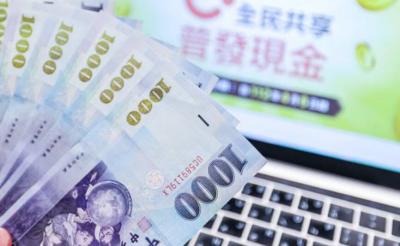Pollutant particles from China may be arriving in Kinmen Island every winter with the northeast seasonal cold front, bringing carcinogenic heavy metals to the traditionally clean outlying island and increasing long-term cancer risks for its residents tenfold, Academia Sinica’s Research Center for Environmental Changes (RCEC) said yesterday.
“Air particulate matter [PM] concentration on the island during the winter months — from September to May — has in recent years been on the rise. Many times a year, PM10 [fine particles in the air smaller than 10 micrometers in size] concentrations reach an alarming 100 or even 150 micrograms per cubic meter,” said RCEC assistant research fellow Hsu Shih-chieh (??, citing statistics collected by the Environmental Protection Administration (EPA).
Hsu said the increase in pollutants in the winter suggested that much of it had been carried to Kinmen from afar by seasonal cold fronts, which do not blow during the summer and fall months.
More alarming is that among the PM10 particles, more than 50 percent are PM2.5 particles, which are more easily inhaled by the human body and therefore cause more damage, he said.
“The WHO advises that a 24-hour average concentration for PM2.5 should not exceed 25μm/m³, or people begin to develop heart, lung and reproductive problems, or even cancer,” Hsu said. “However, the EPA’s data suggests that Kinmen’s PM2.5 concentrations sometimes are more than double the recommended level, at between 50μm/m³ and 75μm/m³.”
Because of the problem, the National Science Council commissioned Hsu’s team to find out what types of pollutants the air particles contain, as well as where they may have come from, Hsu said.
“Since November in 2007, we have been collecting air samples at Kinmen’s Jinning Elementary and Junior High School. We found that the ratio of PM2.5 to PM2.5 to PM10 is 62 to 38 in the winter in Kinmen and the main composition of the particles includes sulfates, nitrates and heavy metals,” he said.
From a match of iron to aluminum ratio between the air samples and air samples in surrounding regions, Hsu’s team also found that the pollutants possibly came from Jinjiang (晉江), a town in China’s Fujian Province known for its pottery industry.
“Besides the resulting powder from pottery manufacturing, because many of the factories burn bad-grade coal in the process, massive amounts of sulfur dioxide and carcinogenic heavy metals — such as arsenic — are emitted,” Hsu said.
With arsenic concentrations at 28 nanograms per cubic meter, RCEC associate research fellow Candice Lung (龍世俊) said: “We were very surprised that Kinmen — a place most people consider unpolluted — would have arsenic concentrations three times that of Taipei.”
With a 70-year long-term exposure to the particles, a person living in Kinmen would have a 10-fold increase in their chances of developing lung cancer, Lung said.
As for the future, both Hsu and Lung said the next step would be to work with academics across the strait to address the situation.
“Pollutants know no borders, this is a regional problem and one that affects the health of people on both sides of the Taiwan Strait,” Hsu said.

TRAFFIC SAFETY RULES: A positive result in a drug test would result in a two-year license suspension for the driver and vehicle, and a fine of up to NT$180,000 The Ministry of Transportation and Communications is to authorize police to conduct roadside saliva tests by the end of the year to deter people from driving while under the influence of narcotics, it said yesterday. The ministry last month unveiled a draft of amended regulations governing traffic safety rules and penalties, which included provisions empowering police to conduct mandatory saliva tests on drivers. While currently rules authorize police to use oral fluid testing kits for signs of drug use, they do not establish penalties for noncompliance or operating procedures for officers to follow, the ministry said. The proposed changes to the regulations require

The Executive Yuan yesterday announced that registration for a one-time universal NT$10,000 cash handout to help people in Taiwan survive US tariffs and inflation would start on Nov. 5, with payouts available as early as Nov. 12. Who is eligible for the handout? Registered Taiwanese nationals are eligible, including those born in Taiwan before April 30 next year with a birth certificate. Non-registered nationals with residence permits, foreign permanent residents and foreign spouses of Taiwanese citizens with residence permits also qualify for the handouts. For people who meet the eligibility requirements, but passed away between yesterday and April 30 next year, surviving family members

Taiwanese officials are courting podcasters and influencers aligned with US President Donald Trump as they grow more worried the US leader could undermine Taiwanese interests in talks with China, people familiar with the matter said. Trump has said Taiwan would likely be on the agenda when he is expected to meet Chinese President Xi Jinping (習近平) next week in a bid to resolve persistent trade tensions. China has asked the White House to officially declare it “opposes” Taiwanese independence, Bloomberg reported last month, a concession that would mark a major diplomatic win for Beijing. President William Lai (賴清德) and his top officials

The German city of Hamburg on Oct. 14 named a bridge “Kaohsiung-Brucke” after the Taiwanese city of Kaohsiung. The footbridge, formerly known as F566, is to the east of the Speicherstadt, the world’s largest warehouse district, and connects the Dar-es-Salaam-Platz to the Brooktorpromenade near the Port of Hamburg on the Elbe River. Timo Fischer, a Free Democratic Party member of the Hamburg-Mitte District Assembly, in May last year proposed the name change with support from members of the Social Democratic Party and the Christian Democratic Union. Kaohsiung and Hamburg in 1999 inked a sister city agreement, but despite more than a quarter-century of